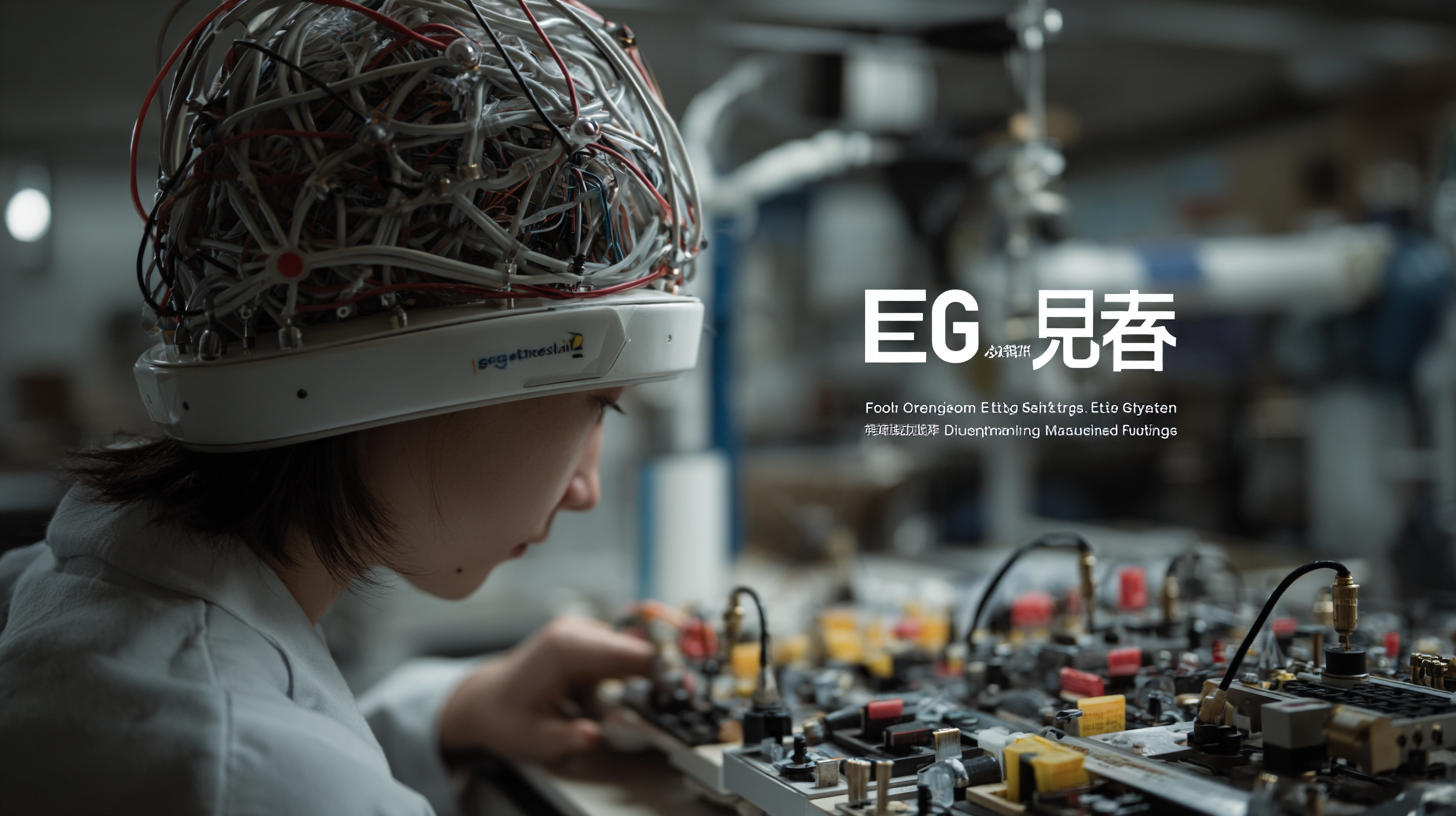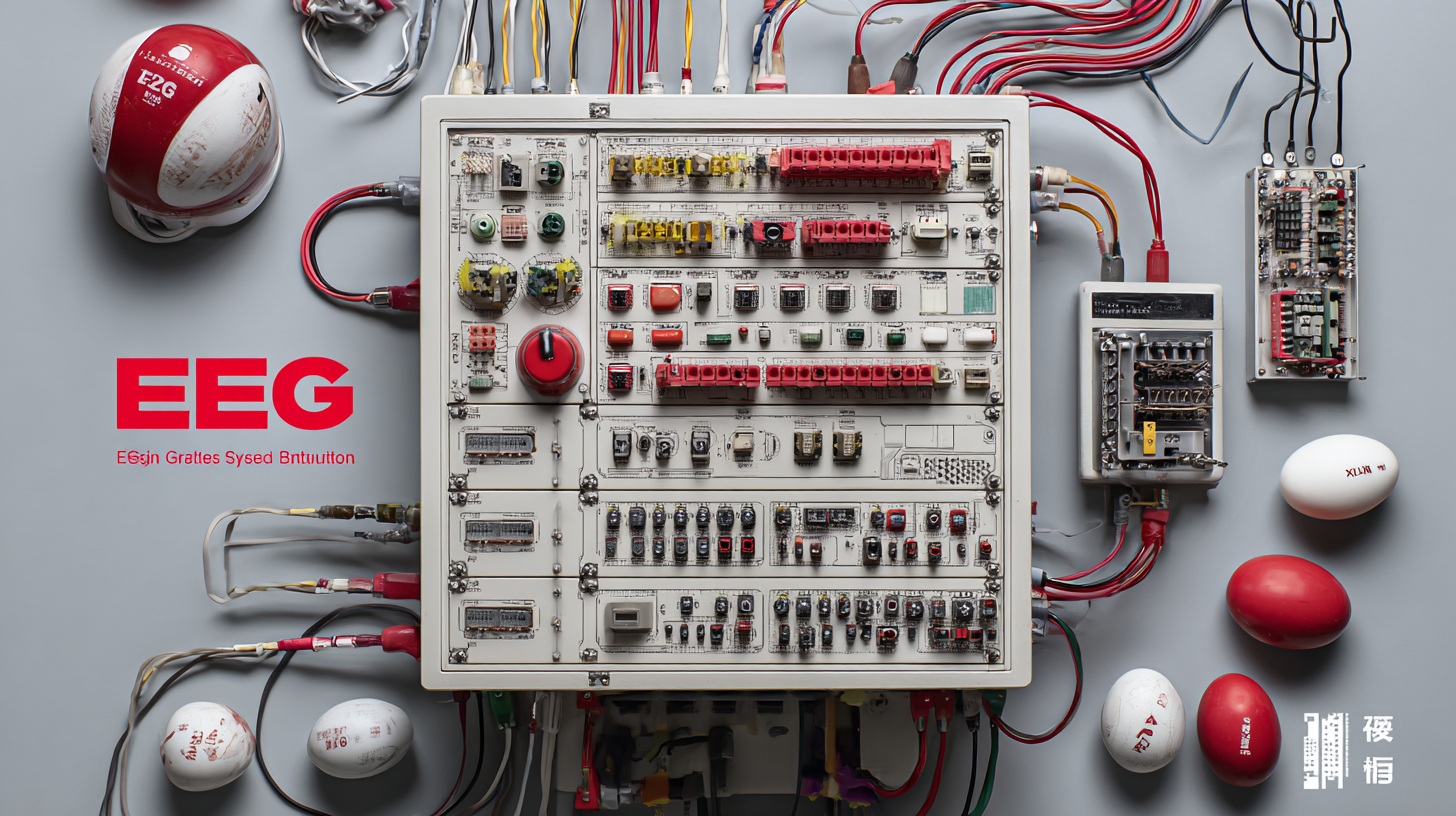Bankim Nagar, Siliguri, West Bengal
- GST NO. : 19BHDPS7640K1ZR
Precision Crafted EEG Systems: Elevating Global Standards in Chinese Manufacturing
In recent years, the global market for EEG systems has witnessed remarkable growth, driven by advancements in technology and increased awareness of neurological health. According to a report by MarketsandMarkets, the EEG systems market is projected to reach USD 1.2 billion by 2025, growing at a CAGR of 7.4% from 2020 to 2025. This growth is a testament to the pivotal role that EEG systems play in clinical diagnostics, research, and therapeutic monitoring.
 As China positions itself as a manufacturing powerhouse, the rise of precision-crafted EEG systems presents an opportunity to elevate global standards in medical device production. Innovating with a focus on quality and reliability, Chinese manufacturers are not only meeting the surging demand for advanced EEG technologies but also setting benchmarks that could redefine industry practices worldwide. This blog delves into the synergy of digital technologies and manufacturing excellence that is driving the evolution of EEG systems in China.
As China positions itself as a manufacturing powerhouse, the rise of precision-crafted EEG systems presents an opportunity to elevate global standards in medical device production. Innovating with a focus on quality and reliability, Chinese manufacturers are not only meeting the surging demand for advanced EEG technologies but also setting benchmarks that could redefine industry practices worldwide. This blog delves into the synergy of digital technologies and manufacturing excellence that is driving the evolution of EEG systems in China.
Advantages of Precision EEG Systems in Modern Healthcare
Precision EEG systems are transforming modern healthcare, providing clinicians with unprecedented insights into brain function. These advanced systems not only capture electrical activity through electroencephalography (EEG) but can be integrated with functional near-infrared spectroscopy (fNIRS) to offer a comprehensive view of both electrical and hemodynamic responses. Recent studies highlight that the integration of EEG and fNIRS can unlock significant advances in neuroscience research, enabling earlier detection of neurological disorders and more targeted treatment approaches. According to industry reports, the global EEG market is expected to reach approximately $1 billion by 2025, driven by the growing adoption of precision mental health assessments and innovative research methodologies.
The convergence of wearable biosignal sensors, including EEG systems, and machine learning is further enhancing patient outcomes. Machine learning algorithms can analyze vast amounts of biosignal data, identifying patterns that may elude traditional diagnostic techniques. This combination allows for the real-time monitoring of neurological health, identifying anomalies that might indicate conditions such as epilepsy or sleep disorders before they escalate. Furthermore, a recent review found that integrating AI with EEG systems can streamline workflows in healthcare settings, reducing the burden on medical professionals while improving diagnostic accuracy. As healthcare continues to evolve, the role of precision EEG systems stands out as a catalyst for improved patient care and better health outcomes.

Enhancing Research Capabilities with Advanced EEG Technology
The integration of advanced EEG technology is significantly enhancing research capabilities across various fields, particularly in neuroscience. Recent studies indicate that combining Electroencephalography (EEG) with transcranial magnetic stimulation (TMS) provides unprecedented insights into cortical excitability, paving the way for breakthroughs in understanding brain functions. This innovative approach allows researchers to explore the underlying mechanisms of brain activity with greater precision, facilitating more effective interventions in mental health and cognitive disorders.

Moreover, developments in EEG technology, such as novel artifact removal algorithms leveraging advanced attention mechanisms, are enhancing the reliability of electrical brain activity measurements. This improvement is crucial for applications ranging from emotion recognition to brain disease detection, as it ensures that the data collected accurately reflects neuronal activity without interference. As universities and research institutions invest in state-of-the-art equipment and software, the landscape of cognitive research is rapidly evolving, driven by the demand for high-temporal-resolution data that can inform both scientific inquiry and practical applications.
Boosting Patient Outcomes Through Accurate EEG Monitoring
The recent advancements in EEG (electroencephalography) technology are significantly reshaping the landscape of patient care in China. With the introduction of precision-crafted EEG systems, healthcare providers are now equipped to monitor brain activity with unprecedented accuracy. This not only enhances the detection of neurological disorders but also leads to better-informed treatment plans, ultimately boosting patient outcomes.
To maximize the benefits of accurate EEG monitoring, practitioners should consider integrating routine training sessions for their staff. Familiarizing healthcare professionals with the latest EEG systems and interpretation techniques is crucial for effective utilization. Additionally, maintaining regular calibration and maintenance of the equipment ensures reliable data collection, which is essential for quality patient care.
Another tip is to establish a standardized protocol for EEG procedures within medical facilities. By creating clear guidelines, healthcare teams can minimize variability in data collection and interpretation, leading to more consistent and reliable patient assessments. This structured approach not only improves individual patient outcomes but also elevates the overall standard of care in the healthcare system.
Precision Crafted EEG Systems: Elevating Global Standards in Chinese Manufacturing - Boosting Patient Outcomes Through Accurate EEG Monitoring
| Metric | Value | Unit |
|---|---|---|
| Average EEG Signal Quality | 92.5 | % |
| Number of EEG Systems Deployed | 1500 | Units |
| Patient Satisfaction Rate | 88.7 | % |
| Average Time for EEG Analysis | 35 | Minutes |
| Annual Growth Rate in EEG System Sales | 15 | % |
| Number of Clinical Trials Supported | 20 | Trials |
The Role of EEG in Neurodevelopmental Disorders: A New Frontier
Neurodevelopmental disorders pose significant challenges, impacting millions worldwide. Recently, Electroencephalography (EEG) has emerged as a pivotal tool in understanding and managing these conditions. By capturing real-time brain activity, EEG technology provides insights into neurological functions that traditional methods often overlook. This breakthrough opens a new frontier in the diagnosis and treatment of disorders such as autism and ADHD, enabling earlier interventions and tailored therapies.
When working with EEG systems, it's crucial to ensure accurate setup to achieve reliable readings. Tips for effective EEG monitoring include minimizing external noise and distractions in the environment, using appropriate electrode placements based on the specific condition being assessed, and maintaining patient comfort to reduce movement artifacts. Additionally, continuous training and consultation with specialists can greatly enhance the interpretation of EEG data, leading to more productive outcomes.
As Chinese manufacturing standards continue to rise, precision-crafted EEG systems promise to elevate global benchmarks in neurodiagnostics. Embracing advanced technologies will not only enhance our understanding of neurodevelopmental disorders but also pave the way for innovative therapies that can significantly improve patient quality of life. Utilizing EEG data effectively will thus be vital in shaping a future where neurological health is prioritized.
EEG Systems and Neurodevelopmental Disorder Diagnosis
Driving Innovation in Chinese Manufacturing with Precision EEG Solutions
In recent years, Chinese manufacturing has been undergoing a transformative shift towards innovation, particularly in the realm of medical technology. Precision-crafted EEG (Electroencephalography) systems exemplify this leap, merging advanced engineering with neuroscience to deliver enhanced diagnostic capabilities. These solutions are pushing the envelope in terms of accuracy and reliability, critically impacting how healthcare professionals monitor and interpret brain activity. As a result, the global standards in EEG technology are being elevated, showcasing China's commitment to producing high-quality medical devices that meet international benchmarks.
The drive for innovation in Chinese manufacturing is underscored by substantial investments in research and development, as well as collaborations between industry leaders and academic institutions. By harnessing cutting-edge technologies like artificial intelligence and machine learning, manufacturers are developing EEG systems that not only improve patient outcomes but also facilitate ongoing research in neurology. This proactive approach positions China as a key player in the global medical device market, illustrating how a focus on precision can spur advancements that benefit healthcare practitioners and patients alike. As these ambitious endeavors continue to unfold, they herald a new era of manufacturing excellence grounded in innovation and precision engineering.

